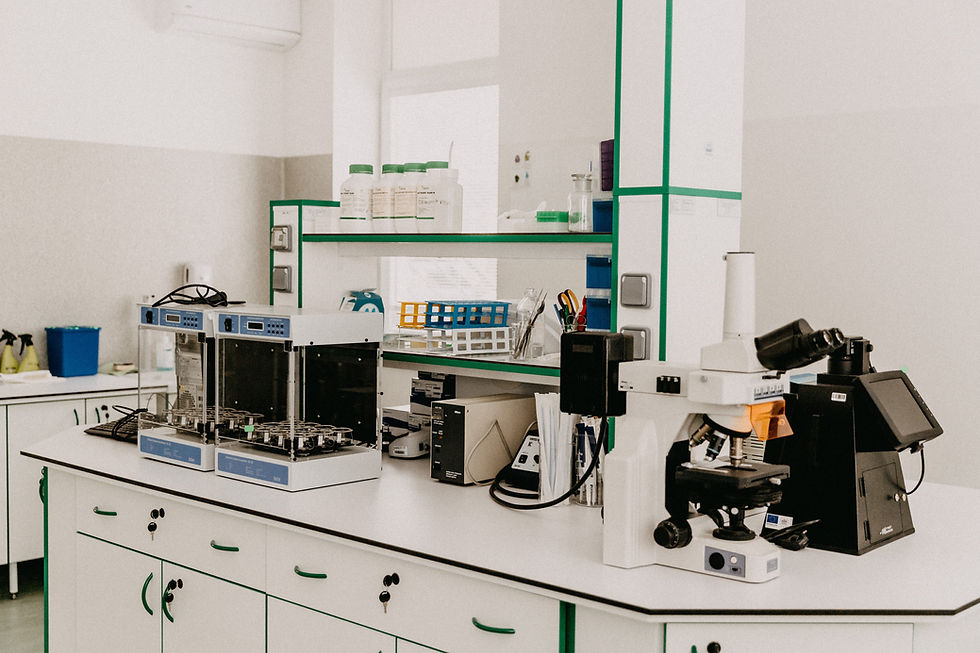Current Advances in Veterinary Medicine
- Dr. Kim Vanwagner

- Dec 14, 2023
- 3 min read

As we have been moving through the spring season, you probably have been aware of all the wonderful growth and changes surrounding us. During spring, dormant plants begin to grow again, new seedlings sprout out of the ground and hibernating animals awake. Veterinary medicine is also found to have growth and changes that are becoming more noticeable.
Veterinary medicine continues to grow and evolve with the biggest changes happening with the invent and improvement of various technologies. Thirty years ago, the only veterinary equipment for diagnosis was the x-ray. We now have digital x-ray, ultrasound, MRI, advanced laboratory testing, laparoscopic technology, and more. Anesthesia and anesthetic monitoring for animals have also made leaps and bounds, making surgery safer and more effective for our pets. Virtual consults and care have become more popular due to the covid era. In Texas, virtual consults and appointments (telemedicine) are available for patients with current (VCPR) veterinary client patient relationships. Meaning your veterinarian has performed a physical exam within the past 12 months in person. Check with your local veterinarian, as there are many options to facilitate virtual appointments for those interested.
Changes in the pharmacological world have triggered changes within medical management of common cases needing antibiotics and pain management. Antibiotic resistance is a national priority, and the U.S. government has taken ambitious steps to fight this threat.
For example, it established a U.S. National Strategy for Combating Antibiotic-Resistant Bacteria (National Strategy) and an accompanying U.S. National Action Plan for Combating Antibiotic-Resistant Bacteria (National Action Plan). Standards have been created to help practitioners minimize the usage of antibiotics to only cases that have proven deemed necessary. For example, not all urinary issues require antibiotics. Inflammation of the bladder (cystitis) can look exactly like an infection but a culture helps to rule out infection that would require antibiotics allowing the condition to be treated with anti-inflammatories alone. Topical therapy, supplements, and the newer treatment modality Phovia (florescent light therapy) can treat a variety of dermatological concerns without using oral antibiotics.
In addition to antibiotic concerns, there is also currently an opioid overdose epidemic. According to the CDC, the number of drug overdose deaths increased by nearly 30% from 2019 to 2020 and has quintupled since 1999. Nearly 75% of the 91,799 drug overdose deaths in 2020 involved an opioid. From 2019 to 2020, there were significant changes in opioid-involved death rates: 1) Opioid-involved death rates increased by 38%, 2) Prescription opioid-involved death rates increased by 17%, 3) Heroin-involved death rates decreased by 7%, 4) Synthetic opioid-involved death rates (excluding methadone) increased by 56%. Various modalities are available to manage pain. Examples include: 1)physical therapy, 2)multimodal combination of medication so dosages to be decreased to help prevent common side effects, 3)alternative medicine including acupuncture, laser, and chiropractic, 4) supplements and Chinese herbs, and several other options.
Integrative medicine is becoming more popular in veterinary medicine as more people are experiencing positive results and improvements in the human aspect. Integrative medicine combines the most well-researched conventional medicine with the most well-researched, evidence-based complementary therapies to achieve the appropriate care for each animal. Veterinarians are able to obtain certifications to implement other modalities. Traditional Chinese Veterinary Medicine includes 5 branches – acupuncture, herbal medicine, food therapy, tui-na (therapeutic massage), and exercise/life style.
Advances in medicine allow the generation of information and discovery of knowledge creating a significant breakthrough that results in an improvement of the diagnosis, treatment, and prevention of diseases.


Comments